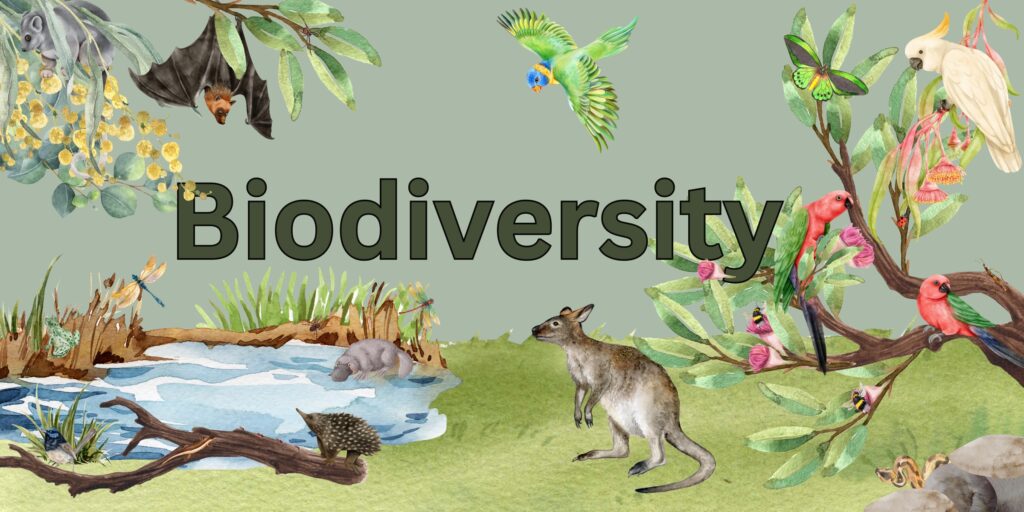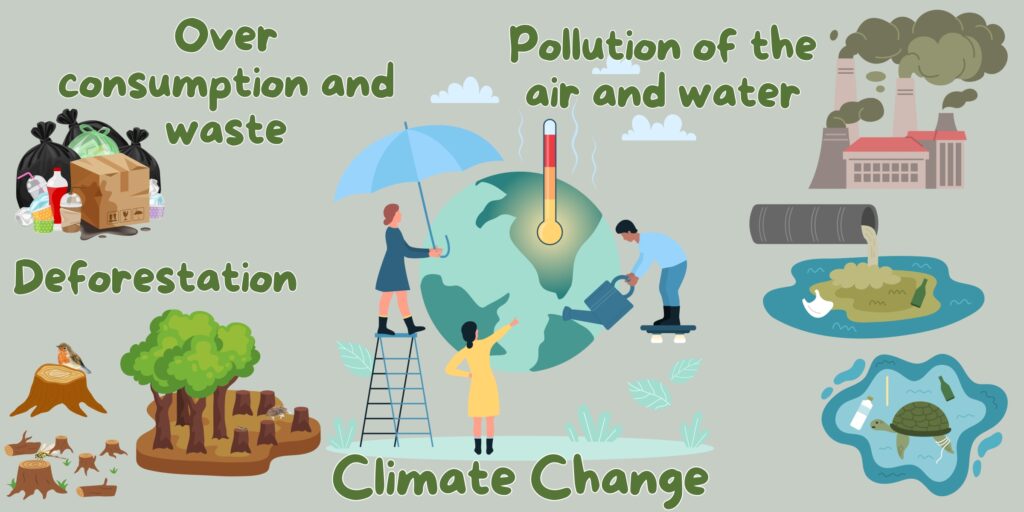Biodiversity refers to the variety of living organisms in a particular habitat or ecosystem. It includes the diversity within species (genetic diversity), between species (species diversity), and the diversity of ecosystems themselves. These elements work together to create the complex web of life that supports all living beings, including humans.

Genetic diversity
Genetic diversity is the variety of genes within a species. Each species is made up of individuals that have their own particular genetic composition. This means a species may have different populations, each having different genetic compositions. To conserve genetic diversity, different populations of a species must be conserved.
Genes are the basic units of all life on Earth. They are responsible for both the similarities and the differences between organisms.
Not all groups of animals have the same degree of genetic diversity. Kangaroos, for example, come from recent evolutionary lines and are genetically very similar. Carnivorous marsupials, called dasyurids, come from more ancient lines and are genetically far more diverse. Some scientists believe that we should concentrate on saving more genetically diverse groups, such as dasyurids, which include the Tasmanian Devil, the Numbat and quolls.
If we lose one species of dasyurid, we lose a substantial genetic resource. Several species of dasyurids are endangered and at least one, the Tasmanian Tiger, has disappeared forever since Europeans arrived in Australia.
Species diversity
Species diversity is the variety of species within a habitat or a region. Some habitats, such as rainforests and coral reefs, have many species. Others, such as salt flats or a polluted stream, have fewer.
In Australia, more than 80% of plant and animal species are endemic, which means that they only occur naturally in Australia.
Species are grouped together into families according to shared characteristics. In Australia, it is not just the individual species that are endemic – whole families of animals and plants are endemic. Seven families of mammals, four of birds and twelve of flowering plants are endemic to Australia. No other country has as many endemic flowering plant families as Australia.
Invertebrates – animals without backbones – make up about 99% of all animal species, and most of these are insects. Invertebrates include crabs, snails, worms, corals and seastars, as well as insects, such as beetles and flies. Insects fill many vital roles in ecosystems as pollinators, recyclers of nutrients, scavengers and food for others.
While we may mostly notice mammals, they actually make up less than 1% of all animal species.
Ecosystem diversity
Ecosystem diversity is the variety of ecosystems in a given place. An ecosystem is a community of organisms and their physical environment interacting together. An ecosystem can cover a large area, such as a whole forest, or a small area, such as a pond.
An ecosystem is a community of organisms and their physical environment interacting together. An ecosystem may be as large as the Great Barrier Reef or as small as the back of a spider crab’s shell, which provides a home for plants and other animals, such as sponges, algae and worms.
Learn more at the Australian Museum
Threats to Biodiversity
Despite its importance, biodiversity is under threat from various human activities. Deforestation, pollution, climate change, and overexploitation of natural resources are leading to habitat loss and species extinction at an alarming rate. According to the United Nations, around one million animal and plant species are now threatened with extinction.

How Can We Protect Biodiversity?
Supporting conservation projects, whether through donations, volunteering, or spreading awareness, is a powerful way to protect biodiversity. This includes preserving natural habitats, supporting wildlife protection laws, and creating more protected areas.
Adopting sustainable practices in our daily lives can significantly reduce our impact on the environment. This includes reducing waste, conserving water, choosing sustainably sourced products, and supporting eco-friendly companies.
Educating ourselves and others about the importance of biodiversity is crucial. The more people understand the value of biodiversity, the more likely they are to support conservation efforts and make environmentally conscious decisions.
Advocating for policies that protect biodiversity, such as stronger environmental regulations and support for renewable energy, can lead to significant positive changes on a global scale.
Whether you’re planting native species in your garden, participating in a local clean-up, or simply taking a moment to appreciate the natural world, every action counts.
Let’s commit to making small changes that contribute to a more sustainable future. By working together, we can ensure that the incredible variety of life on Earth continues to thrive for generations to come.

